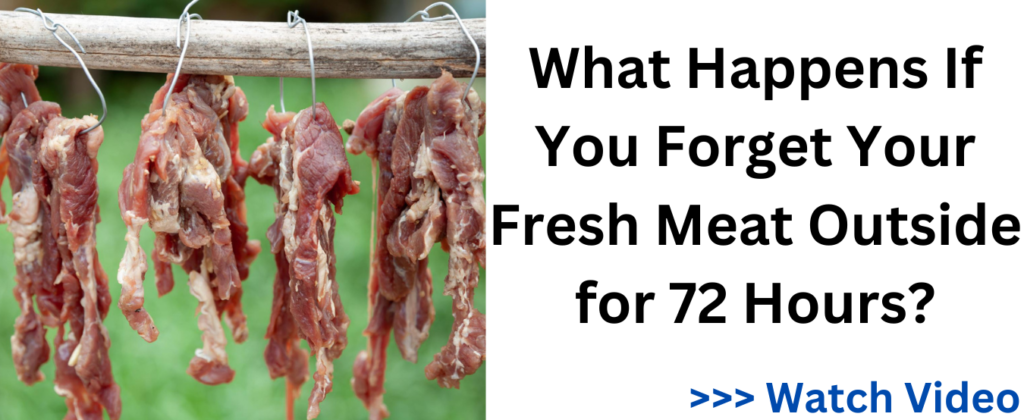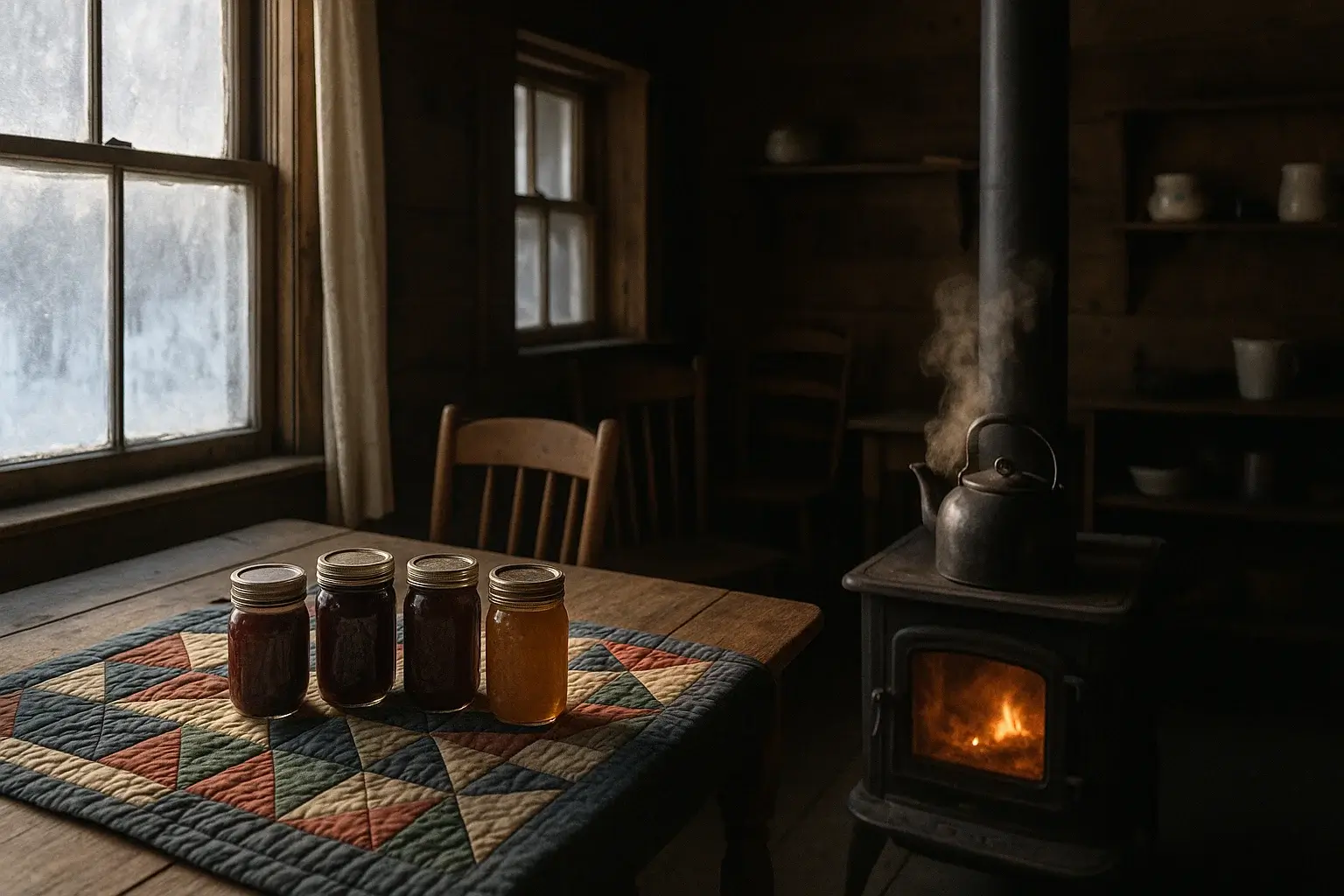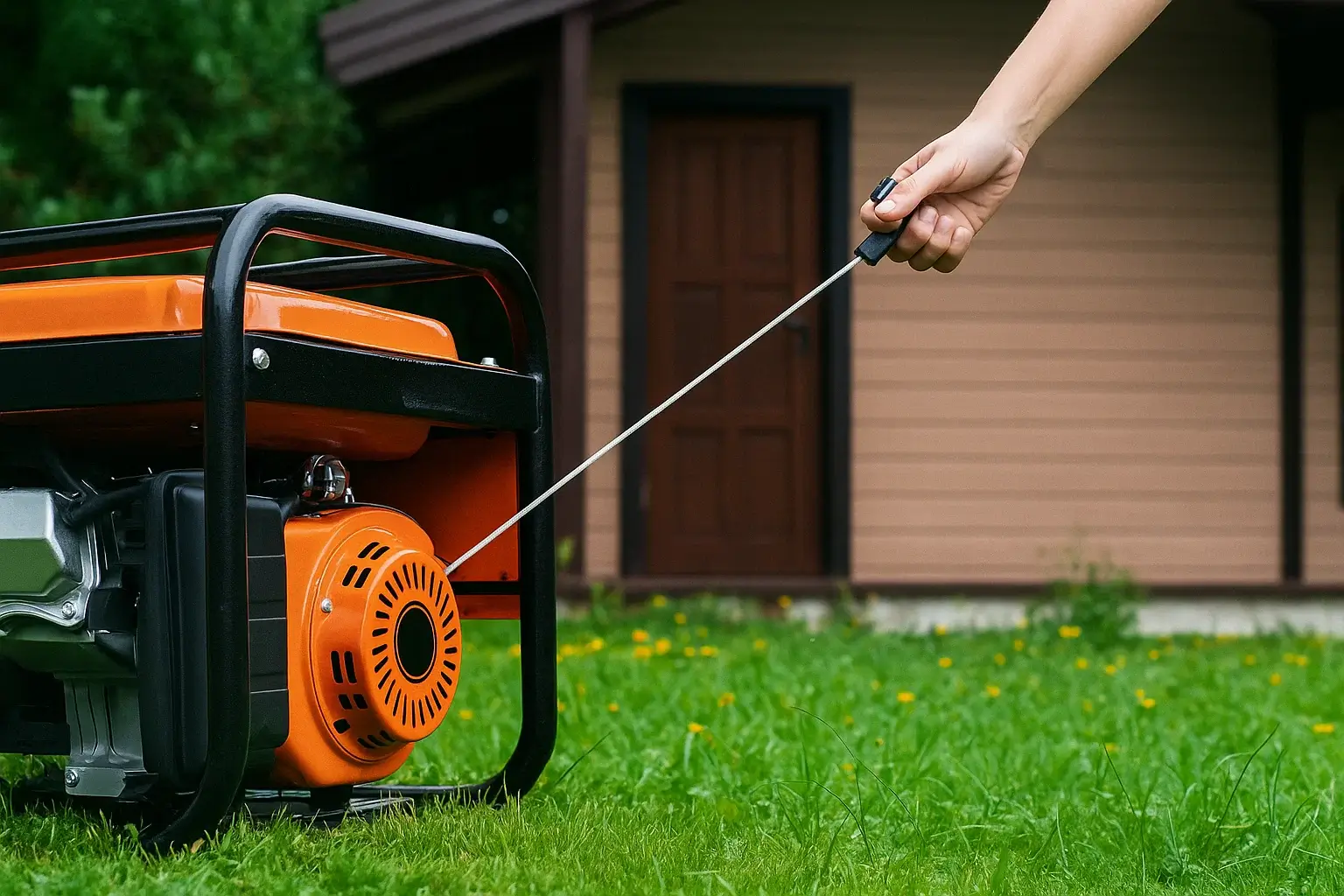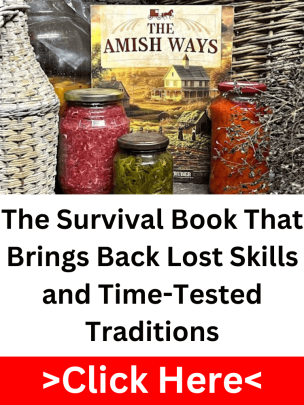The power went off. Not for an hour. Not just for a day. It’s been three days, and the refrigerator has already been heated. Where’s the freezer? It’s pointless. That steak you were preserving, the ground beef you stocked up on, it’s all becoming a bacteria-infested mess. You can’t just dash to the shop since you don’t know when the grid will be operational again. In a survival situation, losing fresh meat thus quickly may mean losing one of your most essential food supplies. So, what comes next?
The majority of contemporary homes lack a contingency strategy for storing meat. We’ve grown so reliant on freezers and refrigerators that it seems impossible to keep meat fresh without electricity. However, it isn’t. People have preserved meat for generations without using a single watt of electricity. The issue is that hardly many people nowadays are capable of doing it. Most people will be left fumbling as their food rots away when the electricity goes off permanently.
Conversely, preppers are already aware of how brittle technology is. They don’t place all their faith in a freezer that might break down. Instead, they depend on tried-and-true preservation techniques, the same techniques that homesteaders, soldiers, and pioneers employed long before refrigeration. These methods, including smoking, drying, salting, and even employing fat to keep bacteria out of meat, have helped people survive in hostile environments for centuries.
While some techniques require preparation and time, others can be used immediately in an emergency. Understanding these techniques could make the difference between wasting food and having a reliable source of protein when it counts most, whether you want to preserve meat for a long time or prevent it from going bad in the coming days.
The Fastest Ways to Keep Meat from Rotting in an Emergency
The clock starts ticking the moment your freezer shuts down. If you don’t act fast, that meat will be a bacterial breeding ground in no time. But a few quick fixes can buy you precious hours, or even days, before the spoilage begins. The first thing you can do is get the meat out of the freezer and into a cooler environment. If it’s winter and temperatures are below 40°F, you can store it outside in the shade, away from animals. If it’s warmer, you’ll need another plan. Hanging meat in a drafty area, like a breezy porch or cellar, can slow down bacterial growth. Fire-drying is another emergency method, simply slicing meat into thin strips and placing it near a fire can remove moisture and keep it from spoiling as fast. If you have salt on hand, rubbing it generously over the surface of the meat will help draw out water and create a temporary barrier against bacteria.
Don’t fool yourself; meat doesn’t last long without refrigeration. In the summer, raw meat can begin to deteriorate in as little as 6 to 8 hours, depending on the temperature and humidity levels. Poultry and ground beef deteriorate even more quickly. You might have 24 to 48 hours before things go wrong if the temperature is lower (below 40°F). The secret is to take action before you notice or detect degradation. It’s already too late when meat begins to become gray, slimy, or smell bad.
What is your best option, then? Cooking, salting, and drying are the quickest emergency short-term preservation techniques. Since it eliminates moisture and adds a layer of bacterial protection, smoking or fire-drying will take the longest. If you don’t have time, you can extend the meat’s shelf life by heavily salting it and keeping it in a cool, shaded place. Additionally, you can prolong the meat’s edibility for another day or two if you know you can consume it shortly by boiling it completely and preserving it in its fat. However, they are only short-term remedies; you’ll need something more dependable if you search for long-term survival strategies.
Salt Curing
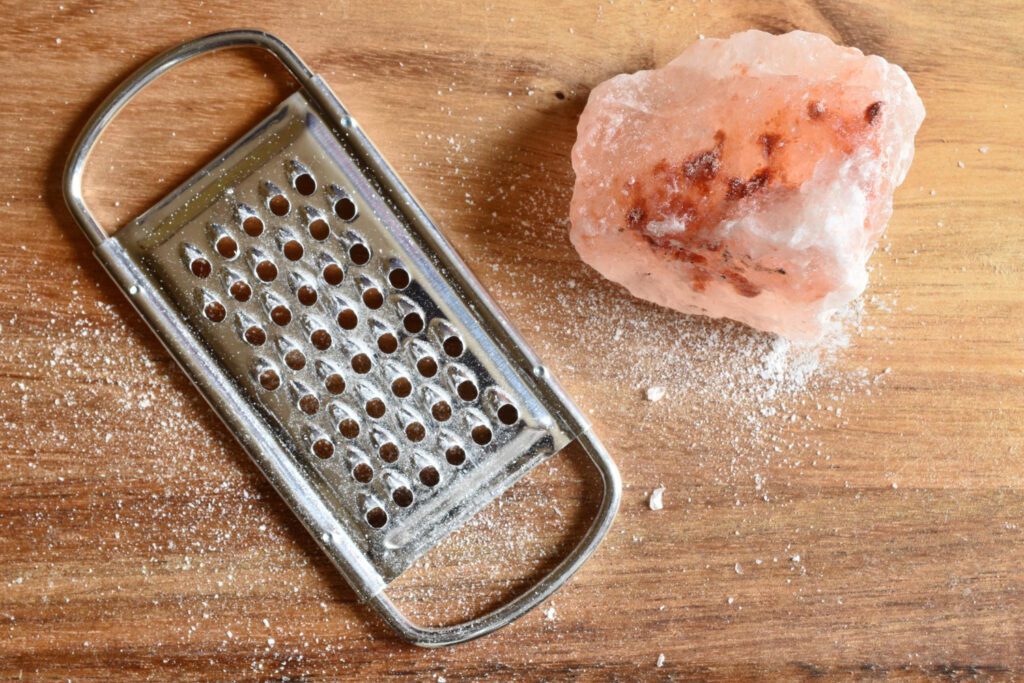
Salt has been the preferred method of preserving meat for decades, and with good reason, it works. When used correctly, salt removes moisture from the meat, preventing germs from growing. Meat remains safe to consume for months or even years because the salt produces a hostile environment that prevents the growth of bacteria that cause the meat to rot. When fresh meat isn’t an option, this approach is still one of the most dependable ways for preppers to ensure they have protein. It was a mainstay for pioneers, soldiers, and sailors who needed to store food without refrigeration.
Every survivalist should keep a significant salt supply on hand. Unlike other food storage goods, salt is inexpensive and never goes bad. It takes up very little room and can be purchased in large quantities for almost nothing. Salt will be invaluable in survival, preserving meat and bartering, healing wounds, and adding vital minerals to your diet. You’ll wish you had extra when grocery shops run out, and supply chains break down. The best salt for curing is non-iodized salt, such as kosher or sea salt. Steer clear of table salt-containing additives since these may interfere with preservation.
So, how do you salt meat in a survival scenario? Start with fresh, clean cuts, no bruises, no excess fat. Trim away anything that might spoil faster. Rub thick salt over every surface, don’t be shy. Pack the meat in a container filled with salt for dry curing, completely covering every inch. If you have time, let it sit for at least 24 hours to a few days, depending on the thickness of the cut. The salt will pull out moisture, and you’ll notice liquid collecting at the bottom, that’s normal. If using brine instead, dissolve a heavy amount of salt in water, submerge the meat, and let it soak for several days. After the curing process, store the meat in a dry, cool place or hang it in an area with good airflow.
Salt curing is dependable but not infallible. Too much liquid in the meat is one of the most common errors. Insufficient drying may allow bacteria to grow and cause rot. An overly humid storage space also increases the risk of mold and spoiling. Watch for any odd slime or odors, and don’t risk consuming anything that feels wrong. When done correctly, salt curing is one of the most excellent methods for preserving meat in survival scenarios when refrigeration is not an option. However, it does require some experience.
Smoking
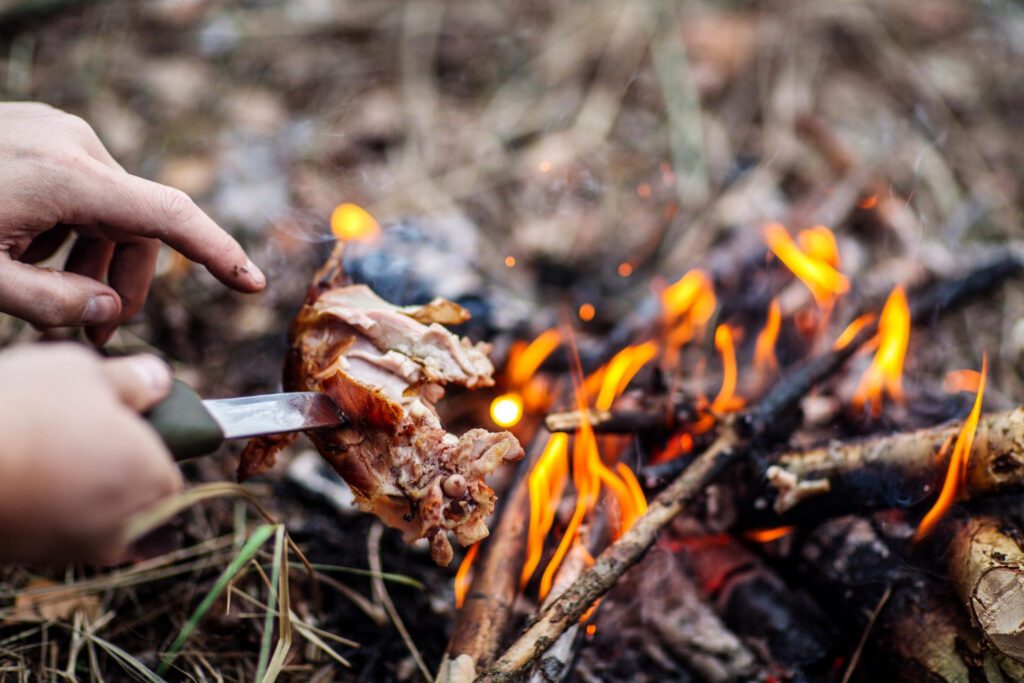
Long before refrigeration was invented, people used smoking meat as a survival tactic for millennia. Smoking was a method utilized by Native American tribes, pioneers, and even soldiers during times of war to preserve meat for extended trips or severe winters. The simple explanation for its effectiveness is that smoke dries the beef and covers it with antibacterial substances that inhibit the growth of bacteria. Adequately smoked meat can endure for weeks or months, unlike fresh meat, spoiling in hours. Thus, it’s an essential skill for preppers. Additionally, you won’t have to eat bland, excessively salted meat when SHTF because smoked meat preserves flavor and nutrients better than other preservation techniques.
A costly smoker is not necessary to complete the task. You may construct an essential survival smoker with fire and a few sticks. Start with a low, steady fire; you want only the smoke to touch the meat, not open flames. The ideal wood is green, non-resinous wood, such as oak, apple, or hickory, which emits no harmful fumes and provides a consistent, tasty smoke. After that, construct a rack out of sticks and suspend thin meat slices above the smoke, ensuring adequate airflow. For the beef to gradually dehydrate without cooking too quickly, the temperature must be kept low, between 130 and 160°F. The flesh will color and firm up over several hours if done correctly. In a long-term survival scenario, you can build a shallow pit, fill it with hot coals, and use sticks and leaves to suspend meat over the pit to trap the smoke.
So, how can you determine when meat is safe to keep in storage? The meat that has been fully smoked should be leathery, dry, and somewhat pliable without being brittle. It still contains too much moisture and will spoil rapidly if it feels sticky or wet. It should smell rich and smokey; avoid risking a sour or unpleasant fragrance. If in doubt, it is always safer to smoke for a more extended period than to quit too soon. When you’re done, wrap your jerky in a cloth in a cool, dark area and an airtight, dry container. Meat that has been properly smoked will keep for weeks in mild weather and even longer in a dry environment. A dependable protein source that doesn’t need to be refrigerated can be the difference between starvation and survival in a real-world situation.
Pemmican: The Ultimate Survival Superfood
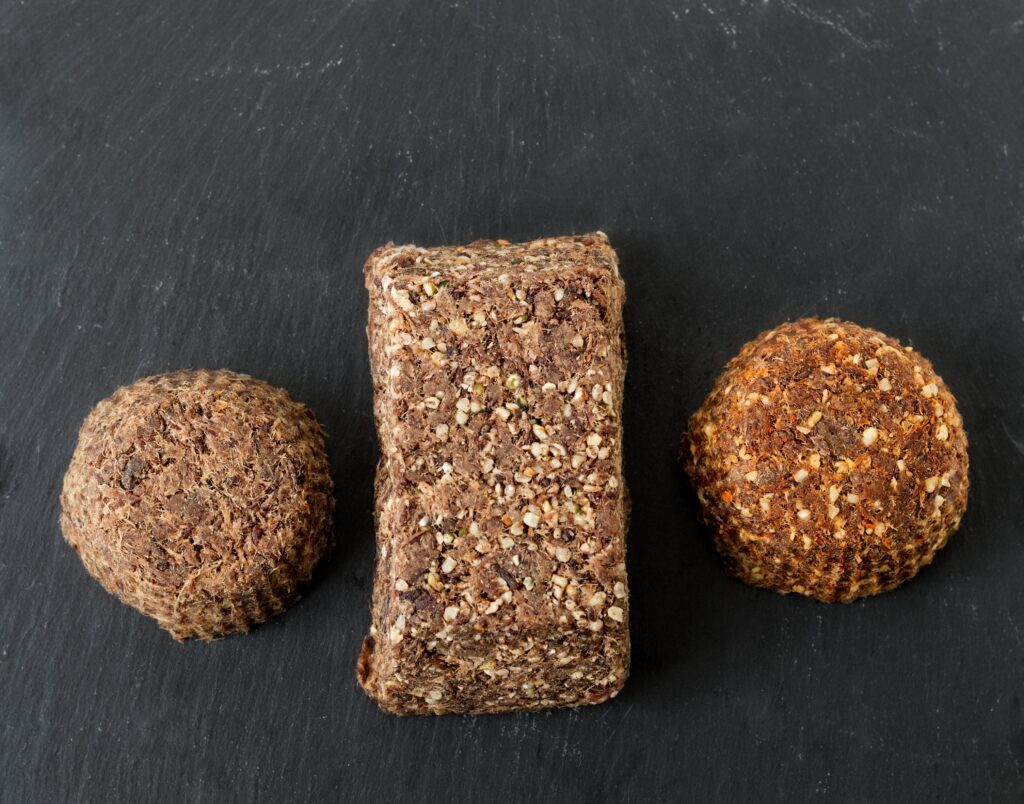
Pemmican has been used for generations by Native American explorers, frontiersmen, and warriors to keep them alive throughout arduous winters and protracted travel. Even fur traders and Arctic expeditions in the 19th century relied on this nutrient-dense, high-calorie meal to survive. Why? Pemmican is energy-dense, lightweight, and shelf-stable. Pemmican is one of the best long-term survival foods a prepper can have because it will keep for years or even decades without refrigeration, unlike fresh meat that spoils quickly.
Pemmican is surprisingly easy to make, but using the appropriate components is essential. For extra nutrients, you’ll need rendered animal fat (tallow), lean, dried meat (ideally beef, bison, or venison), and optional dried berries. Before the meat is pounded into a fine powder, it must be scorched, no moisture. After that, the fat is melted and combined with the meat powder in a 50/50 ratio. Crushed dried berries are one variant that adds a little flavor and vitamin C. To create a dense, nutrient-rich survival food, the pemmican is combined and then formed into bars or sealed in airtight containers.
Pemmican’s shelf life is what makes it so renowned. Pemmican has a five to fifty-year shelf life when prepared and stored correctly. According to historical documents, pemmicans can be safely consumed even after being stored for decades. The total elimination of moisture and the protective barrier that the fat forms are essential to this longevity. Pemmican keeps maintained as long as it is dry and sealed since germs require moisture to develop. You may prepare a batch today and use it years later when food resources are limited in a survival situation.
Proper storage extends the shelf life of pemmican. It should be stored in a cool, dry, dark area and sealed in an airtight container. If feasible, vacuum-seal it to extend its life even more. Some preppers cover pemmican in wax paper or place it in Mylar packets with oxygen absorbers. If you reside in a humid region, store it in a well-ventilated area to avoid moisture absorption. Your pemmican supply will be as dependable as canned items without taking up freezer space.
Pemmican excels in long-term survival scenarios where cooking is not always available, and high-energy food is required. It can be eaten plain, crushed into stews, or fried with extra fat for a more substantial meal. Because it is high in protein and vital fats, it offers the energy required for strenuous labor, bug-outs, and emergency survival. Whether you store it for a future disaster or take it on a long hunting expedition, pemmican is one of the finest food options for staying robust and self-sufficient after SHTF.
Burying Meat
Before refrigeration, humans used cold, steady temperatures below the earth’s surface to prevent meat from deteriorating using root cellars and underground pits. When there are no other options, preppers can still utilize this technique to prolong the shelf life of fresh meat. The idea is straightforward: excavate a pit deep enough that the temperature stays consistently excellent, preferably between 35 and 50°F. Some survivalists fill the hole with rocks or put a container within to keep moisture and bugs out. In colder climes, meat can be kept from decaying for weeks or even months in an underground pit that is adequately insulated.
However, if done incorrectly, burying meat carries significant risks. Animals are the main worry since they will quickly uncover it if they detect the fragrance. Meat must be tightly wrapped, kept in an airtight container, and buried far enough underground to be inaccessible to scavengers to avoid this. Moisture and bacteria pose serious risks as well. Meat can decay or grow mold more quickly on damp ground than if left out. Instead of burying meat in the ground, some preppers utilize sealed metal or plastic containers to lower this risk. Even so, frequent inspections are required to ensure it’s safe to consume.
This technique performs best in cold or mild climates where the earth remains cool throughout the year. In hot, humid climates, underground storage is far less effective since the soil won’t be cold enough to inhibit the growth of bacteria. It can be helpful in an emergency as a temporary fix, but unless combined with other preservation methods like drying or salting, it is not a reliable long-term solution. Insulation and location are crucial if you’re depending on subterranean storage. If done incorrectly, you will be unearthing rotting meat rather than a dependable food source, but it can give you time when SHTF.
Pressure Canning: The Only Safe Way to Can Meat
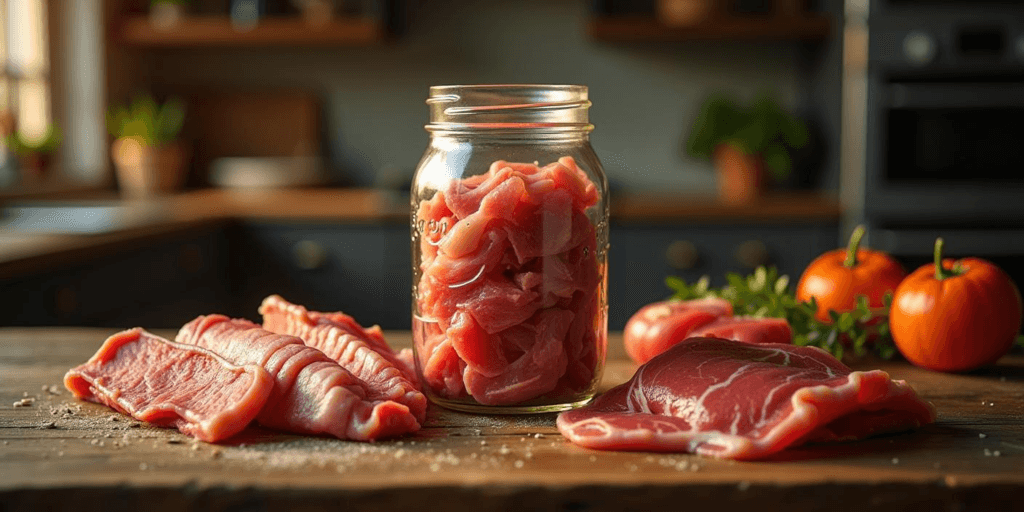
One of the most dependable long-term meat preservation techniques is canning, but there is one strict requirement that every prepper must adhere to: you must use a pressure canner, not a water bath canner. Meat has a lower acidity than acidic foods like tomatoes or pickles, which makes it an ideal habitat for the fatal bacteria known as botulism, which grows best in oxygen-free conditions. A water bath canner cannot generate the heat and pressure to destroy botulism spores. By reaching 240°F, a pressure canner guarantees that all bacteria and pathogens are eliminated, allowing the meat to be stored and consumed for many years.
To successfully meet, preppers must have a few necessities. A good pressure canner is the first thing you’ll need; this isn’t just a pressure cooker; it’s an actual canner made for long-term, safe food storage. Mason jars, fresh lids (never reuse lids for canning), and a dependable heat source are also required. The procedure is simple: either raw or cooked meat is placed in sterile jars, sealed, and processed for the necessary amount of time at the proper pressure (usually 10–15 PSI, depending on altitude). Meats such as beef, chicken, pork, and game can be prepared either raw (without liquid) or with broth to improve moisture and flavor. The meat in a jar might soon go bad if improperly sealed.
The fantastic shelf life of properly canned meat is one of the most significant benefits of pressure canning. When kept in a cold, dark location, canned meat can last five to ten years, unlike frozen or dry meat. As long as the seal was unbroken and there were no indications of spoiling, several preppers have reported that they could safely consume home-canned meat after more than 15 years. Pressure-canned beef is ready to eat from the jar and keeps its nutritious content, unlike dehydrated or smoked meat. It is one of the most practical survival foods because it requires neither boiling nor soaking, just opening and consuming.
Some meats are more suitable for canning than others. The finest options include chicken, beef, venison, hog, and rabbit because they withstand the canning process well and maintain their tenderness over time. Sealing fatty meats like bacon or sausage is more difficult since the extra fat can cause spoiling. Although some preppers can grind beef, it must be cooked beforehand and any additional fat drained for safety. A supply of home-canned meat on hand is one of the best preparation expenditures since it ensures protein without refrigeration in a survival scenario.
Fat Preservation
One of the earliest and best methods for keeping meat fresh without refrigeration is to store it in rendered fat. This technique keeps meat from spoiling by entirely enclosing it from air and bacteria. In the ancient French preservation method known as “confit,” beef is slow-cooked in fat before being placed in a jar of the same fat to form an oxygen-proof barrier. Like suet coating, lard sealing preserves cooked or dried meat for months or years by encasing it in a thick layer of fat that solidifies at low temperatures. Since bacteria cannot develop in the absence of air or moisture, fat retention is a tremendous long-term survival strategy.
The right kind of fat is essential for success. The best options are suet (a more brutal fat found around animal kidneys), tallow (from beef), and lard (from pork), as they solidify when chilled and remain stable at room temperature. Meat can be preserved for up to a year using lard and tallow and even longer with suet-coated meat appropriately stored. These fats are perfect for survival scenarios where every calorie counts since they retain the flesh and provide necessary calories. Steer clear of butter and vegetable oils as they don’t offer the same amount of preservation and can quickly become rancid.
Although fat preservation is dependable but not infallible because moisture is the main adversary. Meat can become rancid and dangerous if even a tiny bit of water becomes trapped inside the fat layer, which can grow germs and mold. For this reason, before meat is wrapped in fat, it needs to be dried. The shelf life of fat-sealed beef can be prolonged by keeping it in a superb, dark location, but before eating, preppers should constantly look for indications of spoiling. It’s gone bad if there’s mold, a foul smell, or any indication of fermentation. However, when refrigeration is no longer possible, well-prepared fat preservation can offer a dependable, high-calorie beef supply.
Why Every Prepper Needs a Meat Storage Plan
Fresh meat will be the first items to go bad when the grid goes down. You’ll be stuck watching vital protein waste if you don’t have a plan. A solid meat preservation plan is, therefore, essential for any prepper. Depending on your survival situation and available resources, long-term methods such as smoking, pressure canning, pemmican, salt curing, and fat preservation offer varying benefits. While techniques like pemmican and salt curing can guarantee protein without requiring contemporary technology, pressure canning can preserve meat for more than ten years if you have the proper setup. The secret is to have several backup plans and to know what works best for you.
The terrible reality is that it is too late to find things out until a catastrophe strikes. These preservation techniques require expertise and repetition. If you’ve never tried canning food or smoking meat, don’t expect to figure it out when the time comes. Now is the moment to learn. Keep salt on hand. Become accustomed to using a pressure canner. Try preparing some pemmican and keeping it in the right way. It will be more straightforward when it counts if you have more experience today. While those who wait will struggle, those who plan ahead of time will have food security.
Suppose you put these strategies into practice now. In that case, you’ll know exactly what to do in a tragedy rather than being just another person frantically trying to salvage what’s left in your freezer. A true prepper has the know-how to survive when resources run low, not merely someone with a lot of stuff. Not only is meat preservation an ancient art, but it is also essential for survival. You’ll be in a better position when the time comes if you can learn it sooner.



